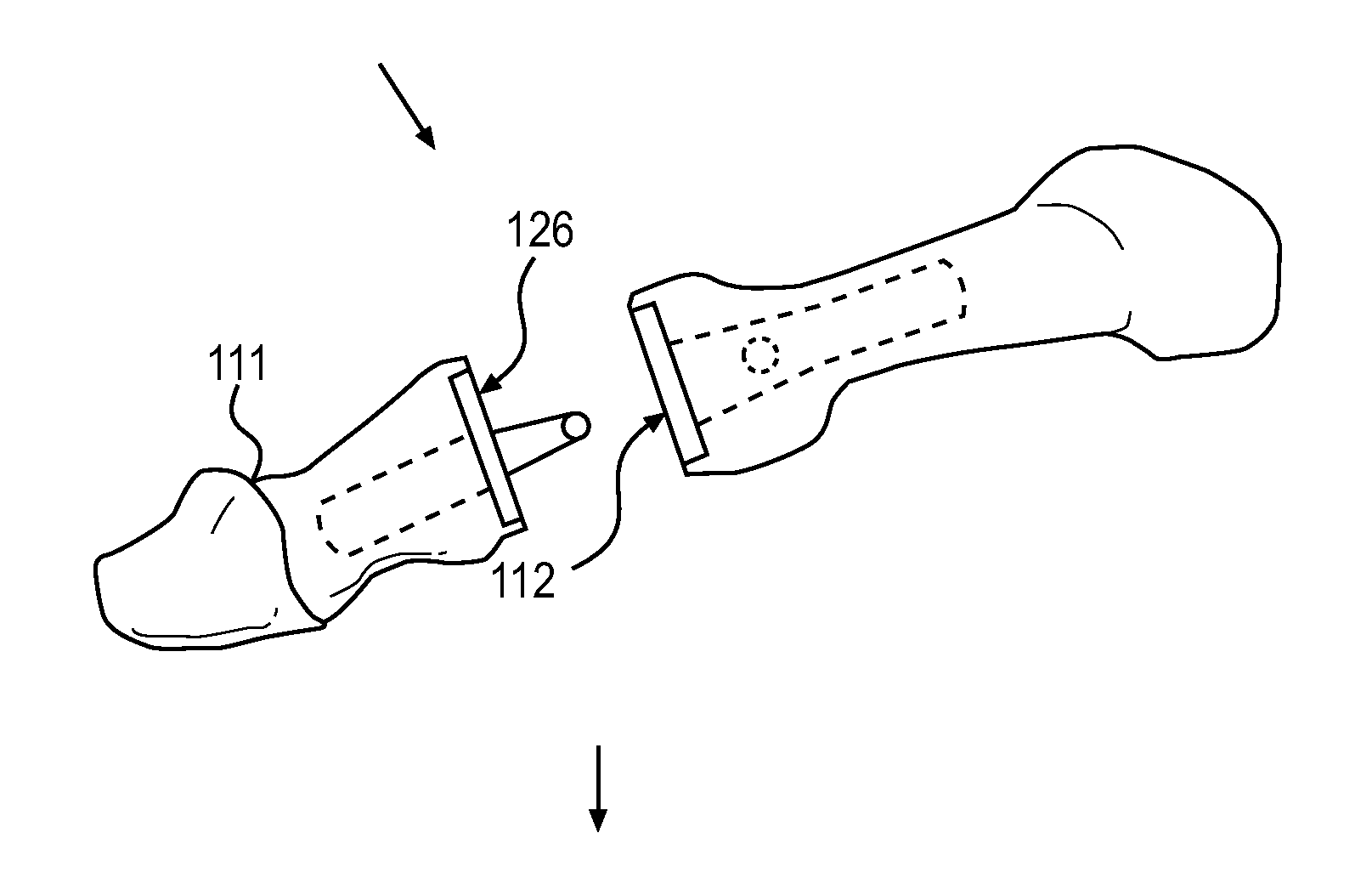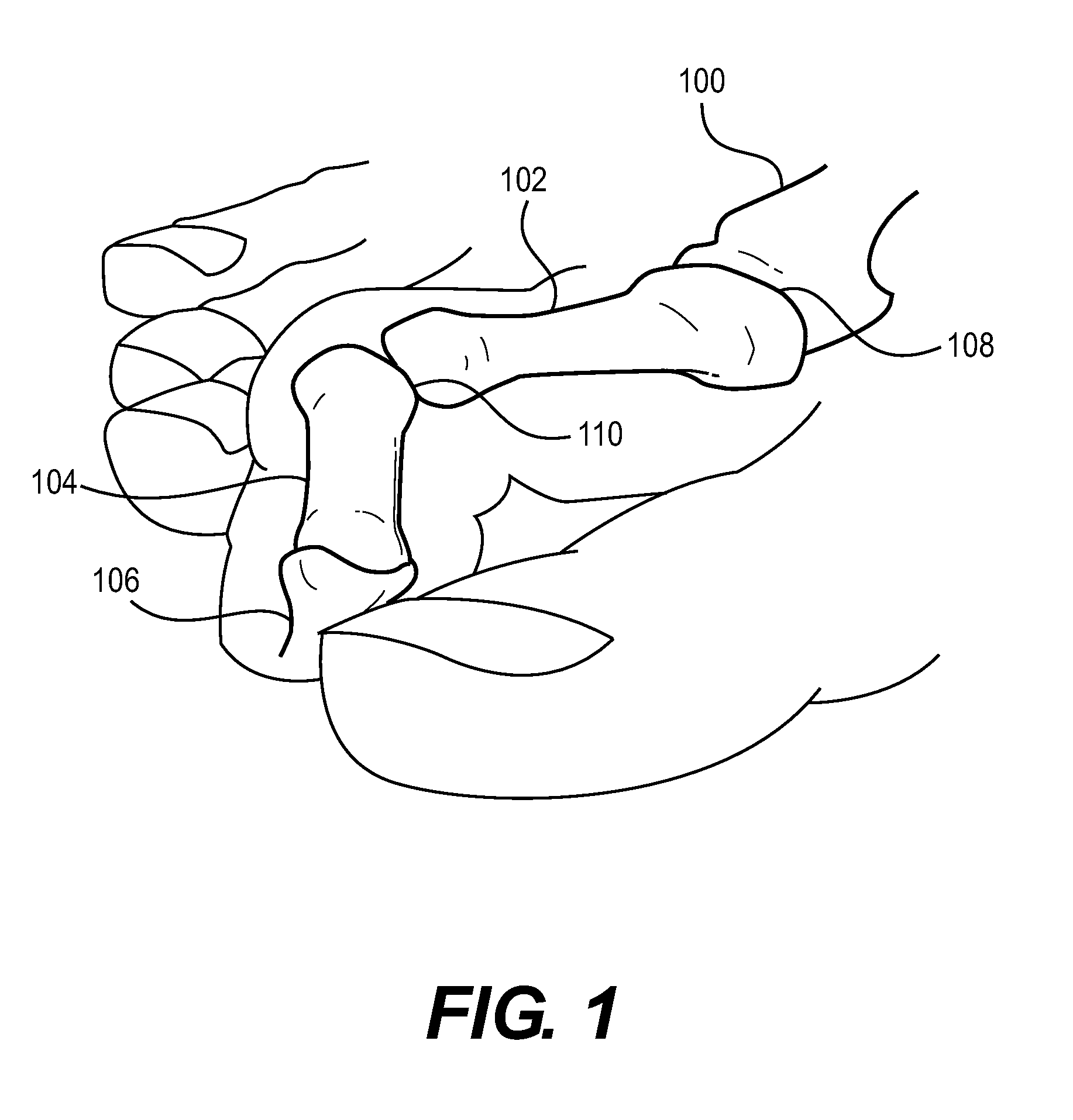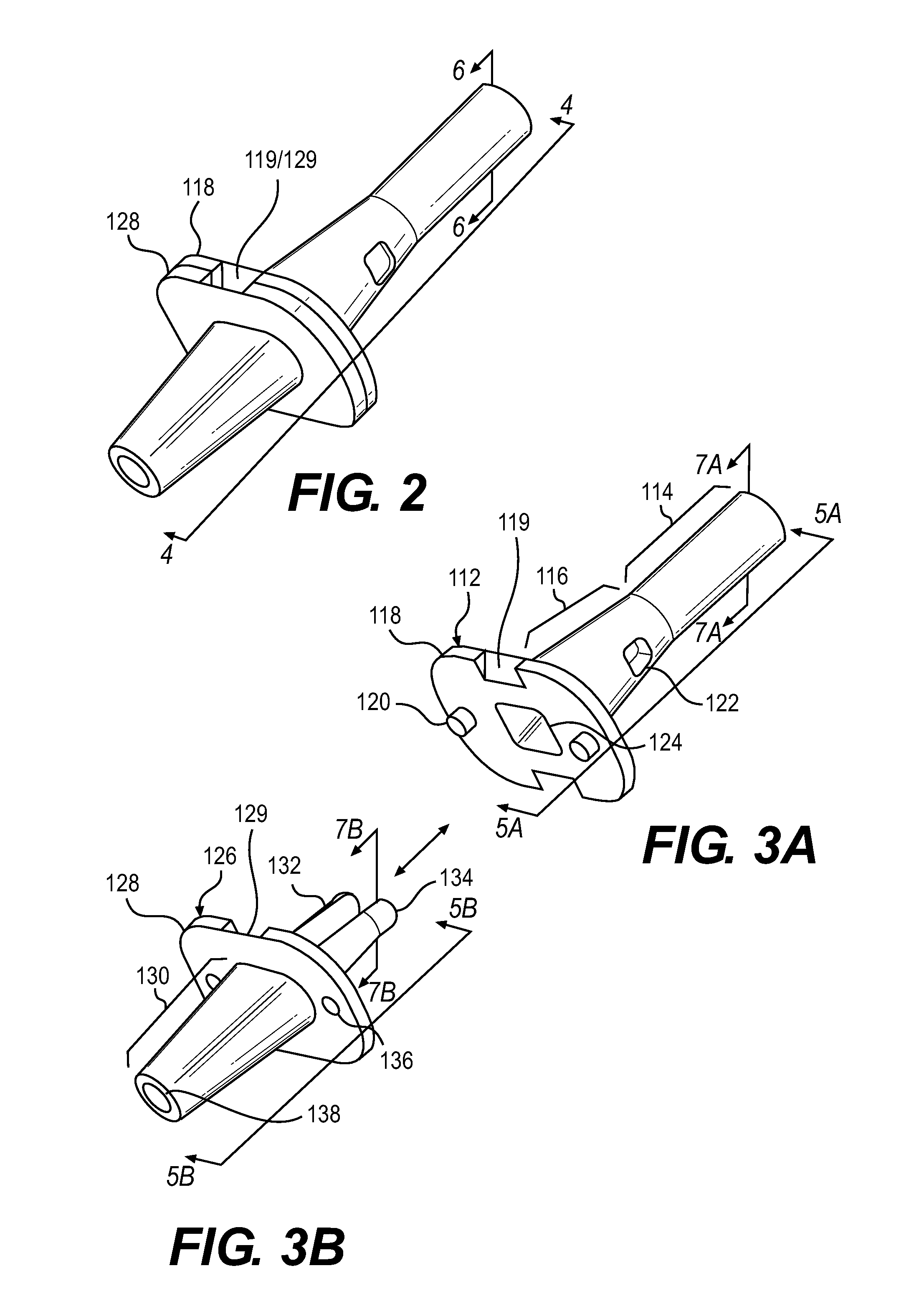Interphalangeal Joint Implant Methods and Apparatus
- Summary
- Abstract
- Description
- Claims
- Application Information
AI Technical Summary
Benefits of technology
Problems solved by technology
Method used
Image
Examples
Embodiment Construction
[0012]The subject disclosure includes advantages of bone fusion while simplifying the procedure and decreasing or eliminating incidences of non-union and non-alignment. A preferred embodiment comprises a two-component device including (1) a proximal phalanx component and (2) a middle phalanx component. The two components are handled separately during a surgical procedure. Each is inserted axially into a respective host bone. After insertion, the components are joined. The attached components are held together in various ways, for example a detent arm / aperture mechanism. As the components are brought together, the arms of one component slide into a central channel, or cannula, in the other component. The arms are spring loaded as they first encounter an inner surface of the cannula and then spring out when the arms encounter lateral apertures present further on along the cannula. Each component can be cannulated to allow for the passage of a wire, e.g. 0.045 inch kirschner wire (k-wi...
PUM
 Login to View More
Login to View More Abstract
Description
Claims
Application Information
 Login to View More
Login to View More - R&D
- Intellectual Property
- Life Sciences
- Materials
- Tech Scout
- Unparalleled Data Quality
- Higher Quality Content
- 60% Fewer Hallucinations
Browse by: Latest US Patents, China's latest patents, Technical Efficacy Thesaurus, Application Domain, Technology Topic, Popular Technical Reports.
© 2025 PatSnap. All rights reserved.Legal|Privacy policy|Modern Slavery Act Transparency Statement|Sitemap|About US| Contact US: help@patsnap.com



